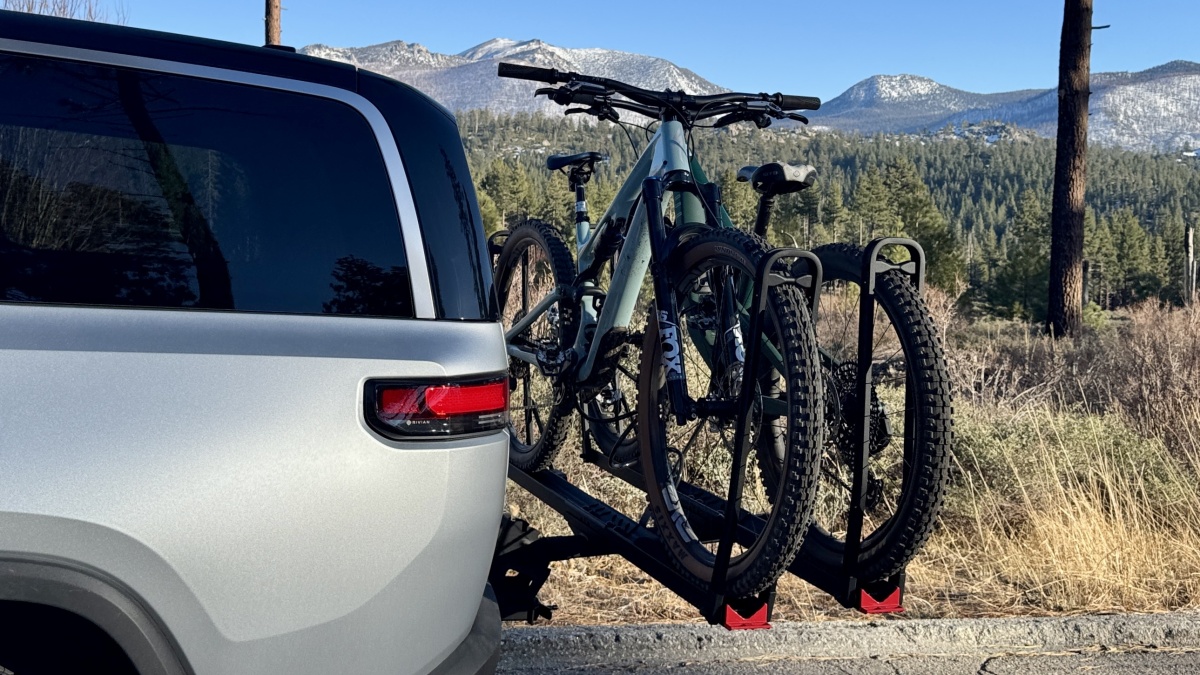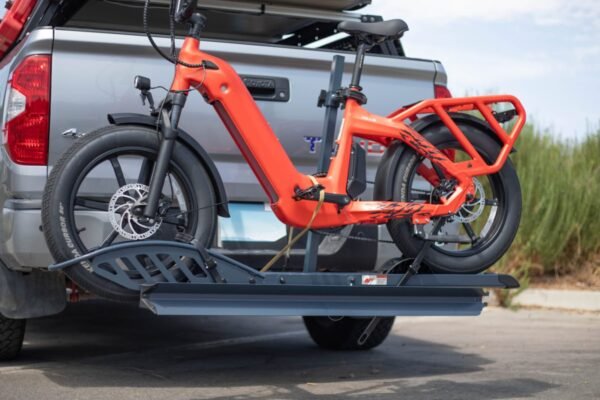The Reasons of Buying a Premium E Bike Rack
Wiki Article
Explore the Different Sorts Of Bike Shelf and Their Practical Applications for Cycling Fanatics
The selection of bike Racks available today provides to the diverse requirements of biking enthusiasts. From freestanding to wall-mounted choices, each layout provides one-of-a-kind benefits for storage and transport. Mobile Racks additionally offer adaptability for those on the move. Nevertheless, picking the optimal kind requires careful factor to consider of details requirements. Understanding these elements can make a substantial difference in both benefit and security for bicyclists. What are the vital factors to consider when picking a bike rack?Understanding Bike Rack Enters
Different kinds of bike Racks accommodate the diverse needs of bicyclists. Among the most typical are freestanding racks, usually located in city locations, which permit multiple bikes to be protected in a small area. Wall-mounted Racks serve those with restricted floor space, offering an effective solution for home storage. Additionally, portable bike shelfs, made for convenience of transportation, allure to bicyclists who often travel.
Hitch-Mounted Bike Racks
Hitch-mounted bike Racks offer a useful option for carrying bicycles, however understanding their setup procedure is crucial for effective use. Individuals need to likewise think about the weight capability of these Racks to ensure safety and stability while traveling. Furthermore, compatibility with various car types plays a significant duty in establishing the appropriate shelf for specific requirements.Installment Refine Introduction
When choosing a hitch-mounted bike rack, recognizing the setup process is essential for assuring security and convenience. Initially, the individual must validate compatibility between the car and the shelf's drawback receiver. The majority of Racks are developed for either 1.25-inch or 2-inch receivers. After choosing the suitable shelf, the installation starts with securing the shelf into the drawback receiver and tightening up the hitch pin or screw to avoid activity. Proper positioning is crucial to establish the rack does not obstruct tail lights or certificate plates. Once set up, it is suggested to inspect for security by using small stress to the shelf. Complying with the supplier's instructions will assure a successful setup, advertising a secure cycling experience when traveling.Weight Ability Considerations

Compatibility With Vehicle Types
Choosing the ideal bike shelf entails verifying compatibility with different automobile kinds. Hitch-mounted bike Racks are developed to affix to the back drawback receiver of a vehicle, making them appropriate for a large range of vehicles, vehicles, and suvs. It is crucial to examine the drawback course and weight capability to verify an appropriate fit. A lot of hitch-mounted Racks are suitable with 1.25-inch and 2-inch receivers, fitting automobiles furnished with proper pulling abilities. Furthermore, individuals ought to consider their car's height and design, as some Racks might block rear access or need added clearance. Eventually, understanding car specifications confirms that cycling lovers can safely transfer their bikes without compromising safety and security or capability.Trunk-Mounted Bike Racks
Trunk-mounted bike Racks use a useful solution for bikers looking for an efficient means to deliver their bikes. Comprehending the installation procedure is crucial for optimal use, as inappropriate configuration can lead to safety and security issues. Additionally, taking into consideration the weight capability of these Racks guarantees that they can safely hold the bikes without risk of damages or failure throughout transit.Installment Process Introduction
Many biking enthusiasts value the convenience of trunk-mounted bike Racks for their convenience of use and convenience. The setup procedure generally starts with familiarizing and unboxing the rack oneself with its parts. Most Racks include flexible straps and hooks created to secure them to the automobile's trunk or hatch. Customers ought to validate the shelf is positioned properly, straightening it with the vehicle's contours for security. Following the producer's guidelines, the straps are then tightened up firmly, guaranteeing a tight fit. It is very important to inspect that the shelf does not obstruct the car's lights or permit plate. Finally, validating that all connections are protected prior to filling bikes is important for risk-free transport. Proper installation improves both security and effectiveness throughout biking journeys.Weight Capability Considerations
When taking into consideration a bike shelf for transporting bicycles, weight capacity is an important element that can not be neglected. Trunk-mounted bike Racks usually carry weight limits that vary depending upon the model and style. It is important for individuals to inspect these specifications to guarantee they do not exceed the recommended weight, as doing so can compromise both safety and vehicle honesty. The majority of trunk-mounted Racks can sustain 1 or 2 bikes, with a mixed weight ability varying from 70 to 120 pounds. Cyclists should additionally take into consideration the weight of their bikes, specifically if they own heavier models like electrical bikes. Properly matching the rack's weight ability with the bikes' weights guarantees a safe and secure and safe transport experience.Roof-Mounted Bike Racks
Roof-mounted bike Racks use a structured service for transporting bikes, offering bikers with the advantage of making the most of freight space. These Racks are made to hold bikes safely atop the lorry, permitting very easy access to the back of the vehicle and preventing obstructions to the certificate plate or tail lights. They are optimal for people who regularly travel with their bikes, as they can fit numerous bicycle designs and dimensions.Installation normally involves connecting the shelf to the vehicle's bars, guaranteeing a steady and secure fit. Roof-mounted Racks are lightweight and frequently aerodynamic, which can bring about boosted gas performance contrasted to other sorts of racks. Individuals need to take into consideration the height of their car when filling and discharging bikes, as well as possible difficulties when entering garages or low-clearance locations - Hitch Bike Rack. In general, roof-mounted bike Racks provide a versatile and effective alternative for avid bikers on the go
Wall-Mounted Bike Racks
Wall-mounted bike Racks provide an efficient solution for bikers seeking to make best use of minimal room while firmly storing their bikes. These Racks are suitable for metropolitan residents or those with little garages, as they raise bikes off the ground and use vertical space. Made from sturdy products, wall-mounted alternatives can fit different bike types, including crossbreed, roadway, and hill bicycles.Setup is straightforward, enabling users to place them in garages, basements, or also exterior spaces. Many layouts allow for one or numerous bikes, making them versatile for private or family use. Additionally, some wall-mounted Racks come with integrated locks or security features to deter burglary, enhancing assurance for bicyclists.
Portable Bike Racks
Portable bike Racks offer bikers a adaptable and hassle-free service for carrying their bikes. These Racks are created for very easy installation and elimination, making them perfect for those that require to regularly change between vehicles or locations. Compact and normally lightweight, portable bike Racks can be conveniently stored in a trunk or garage, reducing the burden of permanent installations.There are numerous kinds of mobile bike racks, including hitch-mounted, trunk-mounted, and roof-mounted options, each dealing with different vehicle kinds and biker preferences. Hitch-mounted Racks provide stability and accessibility, while trunk-mounted Racks are frequently much more flexible and affordable. Roof-mounted Racks are fantastic for making best use of freight room yet may need some training.
Choosing the Right Bike Rack for Your Needs
Exactly how can one identify the most effective bike shelf to fit their certain cycling demands? Recognizing the appropriate bike shelf entails reviewing numerous variables. First, one have to think about the kind of vehicle made use of for transportation, as Racks are created for different placing systems, such as roofing system, drawback, or trunk. Next, the number of bikes to be lugged is important; some Racks suit just one, while others can hold numerous bikes successfully. Furthermore, determining the weight and frame design of the bikes is substantial, as particular Racks are much better fit for heavier or distinctly shaped bicycles. Finally, intended usage needs to be thought about; regular tourists might choose a more portable alternative, while periodic users may focus on simpleness and convenience of installation. By very carefully evaluating these factors to consider, people can pick a bike shelf that fulfills their requirements and enhances their biking experience.
Regularly Asked Concerns
Can Bike Racks Accommodate Different Bike Sizes and Styles?
Bike Racks vary in layout, making it possible for holiday accommodation for various bike sizes and designs. Some Racks feature adjustable elements, while others are specifically tailored for sure bicycles, making sure protected storage space and very easy availability despite the bike's specs.Exactly how Do I Effectively Protect My Bike on a Shelf?
To properly safeguard a bike on a shelf, one must guarantee the frame and wheels are securely attached utilizing bands or locks, examining for security and stopping activity during transportation to prevent damage.Are Bike Racks Easy to Get Rid Of and set up?
Bike Racks differ in installation intricacy, yet lots of are created for user-friendliness. Removable designs generally supply straightforward configuration and removal, while irreversible setups might require devices and more time, depending on the specific style.
What Products Are Bike Racks Normally Made From?
Bike Racks are commonly made from products such as steel, light weight aluminum, and plastic. E Bike Rack. Steel offers sturdiness and toughness, while aluminum supplies lightweight transportability. Plastic alternatives are usually designed for convenience of usage and priceDo Bike Racks Affect Fuel Efficiency When Driving?
The inquiry of whether bike Racks influence gas efficiency when driving is significant. Researches show that bike Racks can boost aerodynamic drag, potentially bring about lowered gas efficiency, specifically at higher speeds or with added weight.After choosing the proper rack, the installation starts with protecting the shelf into the drawback receiver and tightening the hitch pin or screw to stop activity. Roof-mounted Racks are usually wind resistant and light-weight, which can lead to enhanced fuel effectiveness compared to various other kinds of racks. Hitch-mounted Racks give security and access, while trunk-mounted Racks are commonly more affordable and functional. Next off, the number of bikes to be carried is necessary; some Racks fit only one, while others can hold several bikes effectively. Bike Racks differ in design, allowing accommodation for different bike sizes E Bike Rack and styles.
Report this wiki page